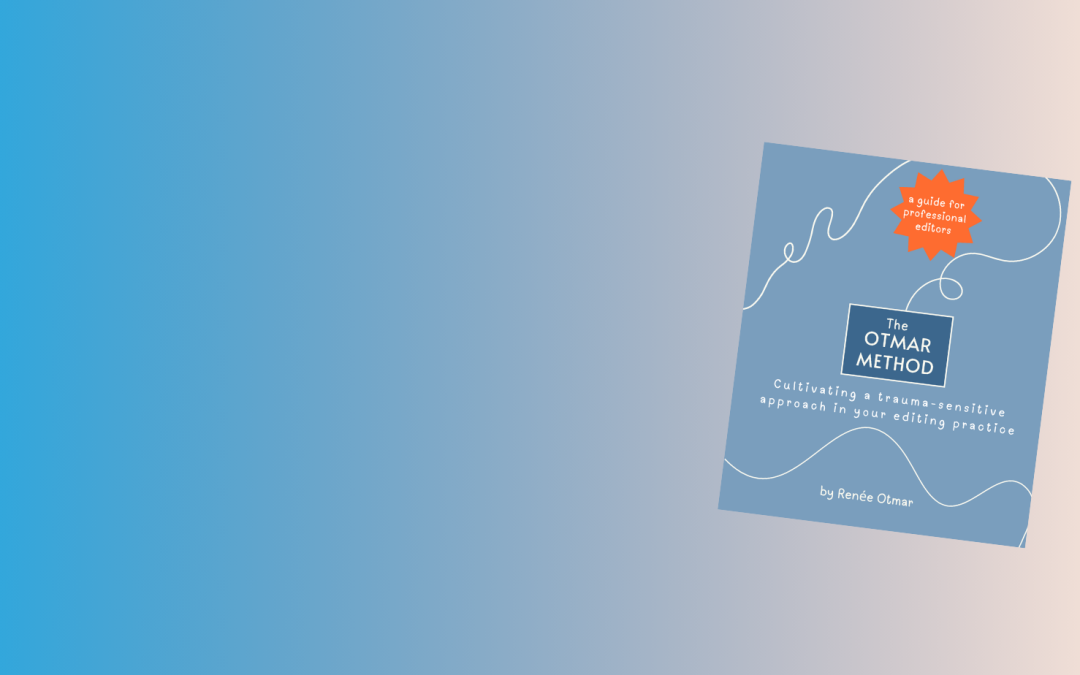Vicarious trauma, traumatisation and burnout are increasingly recognised as occupational hazards of editing. Dr Renée Otmar DE, the 2022 Janet Mackenzie medallist, has extensive experience writing and editing trauma narratives. She recognised the need for education and resources on developing a trauma-sensitive approach and after establishing a program of workshops, Renée has now released the guide Cultivating a trauma-sensitive approach in your editing: the OTMAR method, designed for editors in professional practice – senior as well as mid-career editors, and those who are just starting out.
We spoke with Renée to learn more about the guide and why editors should be considering a trauma-sensitive approach.
Why is it necessary for editors to be thinking about a trauma-sensitive approach when it comes to their work?
Many editors already recognise the risks – personal and professional – of working with texts that include explicit and disturbing content, such as trauma narratives. But many do not. Few know how to work sensitively with the authors of these narratives, who continue to live with the legacies of their trauma. How should we respond when someone becomes distressed when reminded of their experience? How do we raise author queries sensitively and without appearing to be prying or questioning their experience? These questions are fundamental.
This guide seeks to raise editors’ awareness of what constitutes trauma, how to recognise it in others and in themselves, and what can be done.
What is the OTMAR method?
It’s a corny (but hopefully memorable!) acronym highlighting the main considerations when you are seeking to cultivate a trauma-sensitive approach in your work.
- O – other and othering (writing with and about people who are different from us)
- T – trauma (understanding the nature of trauma and considerations in working with trauma narratives and their authors)
- M – manuscript (the document that will become the published book or report)
- A – author and audience (who is writing the story and for whom)
- R – reflection and reflexivity (personal and professional considerations in writing and editing a trauma story).
Why did you write this guide?
Over the past five or six years, I have been working with professional writers and editors who work with disturbing content and with survivors writing their own trauma stories. Some attend my live group sessions, which comprise four to six “workshops” over several months. Others work with me individually in my capacity as a professional supervisor whenever they take on a sensitive project. This is time-consuming work, and necessarily so. To be effective, it cannot – should not – be rushed. Many people don’t understand why I cannot just cover the topics in a single workshop or session. This guide helps to explain why. It’s also an introduction for editors who are not able to attend a group or individual program. (I should also mention that I have produced a version for writers, Cultivating a trauma-sensitive approach in your writing practice.)
What can editors expect from the guide?
An exploration of the key topics already mentioned and a series of provocations to help them design/redesign an editorial practice that suits their unique style of work and is appropriately responsive to the projects and authors they work with. Several people who attended the live program with me said they wished there was a guide they could keep by their desks to remind them of certain things we covered. That’s the main reason I chose the wiro-binding – so it can be left open on relevant pages. I’ve tried to keep it as short as possible while at the same time covering as broad a field with actual, salient examples. I’ve also tried to keep it as inexpensive as possible – after covering the costs of production (printing, design, illustration, proofreading) I’m left with just $1.00 per book to cover my time and expertise. So I hope lots of editors will buy a copy!
Find more information about Cultivating a trauma-sensitive approach in your editing practice: The OTMAR method via Dr Renée Otmar’s website.

